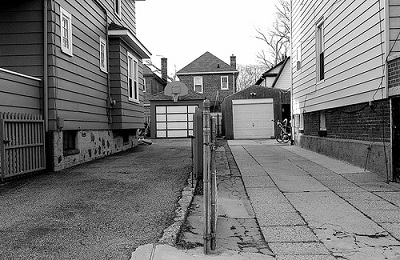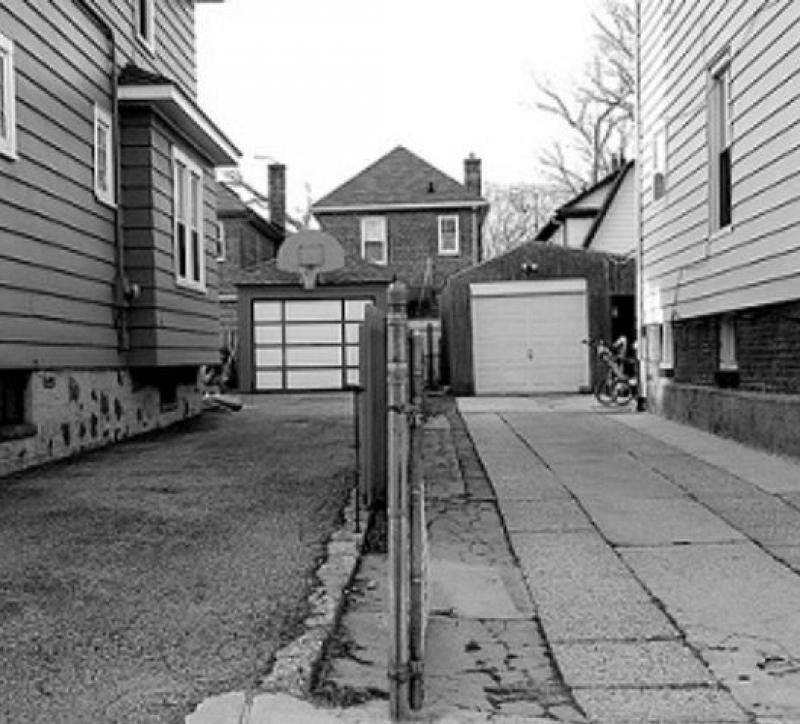How to Repair Your Driveway
by Boris Dzhingarov on Nov 7, 2014
Asphalt and concrete driveways are subject to wear and tear over time. Nature gradually damages the paving, and this will lead to potholes or cracks. Vegetation may also force its way up through the surface. However, repairing your driveway is much simpler than it may appear. The key is to repair the driveway before the cracks begin to expand, as this will allow moisture to erode the ground beneath.

Focus on the Root of the Problem
While the weather can play an important role in damaging concrete paving, other factors may be at work. You will first want to check to make sure that there aren’t any nearby trees with roots that are pushing the concrete up. If this is the case, these trees must be removed, as merely sealing up the crack, in this case, won’t prevent it from continuing to happen.
Clean Up the Place
When you’re getting ready to repair your driveway, you will first want to clean it up. Sweep the top of the driveway in the areas where the cracks appear, and remove any loose debris from the cracks. You may also want to use a screwdriver to tear off any loose parts of the driveway. Once the cracks and driveway are clean, the rest of the work should be much more effective.
Seal the Driveway
For driveways that are made of concrete, you will want to use either pourable grout, textured caulk or a concrete sealer. In addition to this, you will also need some tools. These should include a trowel, gloves and secure clothing, and you will also need a bottle filled with water. This water bottle should have a spray nozzle.
Those using textured caulk won’t need water, but anyone who has grout or sealant will need to use the water to dampen the area. This will create a stronger surface which the sealant can attach itself to. Place the sealant in the crack, and be sure it is filled. Use your trowel to force the sealant down. Be sure to cover each crevice both in the crack and around it. You can use your fingers to push the sealant down, just be sure you’re wearing your gloves, as they will protect them.
Once the crack has been filled, you will want to remove the excess sealant with your trowel and then allow it to dry. If you have to fill larger cracks, you may need to carry out a cutaway below the crack and then fill it with numerous layers of the sealant. It shouldn’t be thicker than 1/3 inches. This ensures that the sealant will be effective during the expansion/contraction that your driveway will experience in the future. This task is more complex, and you may want to call up a contractor for assistance.
Working with Asphalt
When dealing with the little cracks that appear in asphalt driveways it is important to clean out the cracks. You will also need to cut away any pieces which are loose before adding the emulsion filler. This filler can stain the driveway so you will want to follow the instructions and use a caulking gun for better accuracy.
Popular Articles
Three Places to Spend Money on the Exterior of Your Home
When you have the exterior of your home remodeled, you are investing, time, energy and convenience into the project and you want to make sure that...
95796 Views
Homemade Headboards-Make an Upholstered or Wooden Headboard
Homemade headboards can add a lot of personality to any bedroom. They can be coordinated with existing furniture and room decor or they can be the...
74456 Views
When to Use a Brush, Roller or Sponge Brush
Brushes are a good choice for painting trim and woodwork. They are also useful for cutting in the edges around the top and bottom edges and corners...
71821 Views
Creating a Cottage Kitchen with Bead Board
Kitchen decor can range from modern and bold to elegant and elaborate by using strategic kitchen pieces. One of the most popular decorating trends...
52899 Views
Gas Fireplace Diagnostics and Troubleshooting
Follow these steps for diagnosing and troubleshooting Gas Fireplaces repairs. For the average DIYer, this may seem intimidating, depending on the...
30639 Views
Latest Articles
How Much Does It Cost To Take A Bath?
Plumbers know that a bath may seem like a relaxing luxury, but the real cost extends far beyond your water bill. The average soak uses 35 to 50...
on Apr 8, 2025
10 Concrete Patio Ideas on a Budget
A concrete patio can be a game-changer for your outdoor space. It is durable, versatile, and can be customized to fit your style. But what if you...
on Mar 25, 2025
Tips for Creating a Stunning Personalized Photo on Canvas
Order the unique beauty of a personalized photo on canvas and bring your memories to life. With a customized photo on canvas, you can transform...
on Mar 7, 2025
Best Areas to Buy Property in Singapore for Long-Term Growth
Singapore's real estate market remains one of the most stable and lucrative in the world. With limited land supply, strong governmental...
on Feb 18, 2025
Troubleshooting Excess Water in Your HVAC Secondary Condensate Drain Pan
When maintaining your air conditioning system, it is easy to overlook the condensate drain pan - until excess water starts pooling in places where...
on Jan 12, 2025
Featured Articles
What Type of Licensed Contractor Should You Hire?
on Feb 28, 2017
Hire Contractors / Estimates

Looking for a specialty project? There are many types of contractors available for your home improvement needs. Finding the right type of...
Sponsored Articles
Best Areas to Buy Property in Singapore for Long-Term Growth
on Feb 18, 2025
Real Estate / Finance

Singapore's real estate market remains one of the most stable and lucrative in the world. With limited land supply, strong governmental...
Actions
Top Categories
- Garden / Landscaping / Patio — 264
- Kitchen / Bathrooms — 240
- Real Estate / Finance — 203
- Appliance / Repair — 186
- Interior Design / Decor — 184
- HVAC / Air Conditioning — 148
- Cleaning / Maintenance — 144
- Improvements / Remodeling — 131
- Plumbing / Basements — 118
- Floors / Tile / Hardwood — 116
- Doors / Garages — 113
- Safety / Security — 113
Articles Archive
More DIY Articles
Benefits of the Convection Microwave Oven
There are many reasons that a person goes shopping for a new appliance, but if you are in the market for a microwave oven, you may want to consider...
Top Questions to Ask Yourself Before Buying a Freestanding Bath
Without a doubt, taking a hot soak in a freestanding bath takes the pleasure and luxury of bathing to a whole new level. Freestanding baths...
Convection Microwave Uses
In the world of modern technology, a convection microwave has become one of the most used appliances in the kitchen. A convection microwave can...
Do Not Replace It — Repair It
A lot of people are struggling financially. Many of us have too little saved for retirement. Many of us could not afford a sudden expense of a few...
Considerations When Buying a Convection Microwave Oven
If you are in the market for a new microwave oven, whether this is your first one or simply a replacement oven, you need to know about the...

